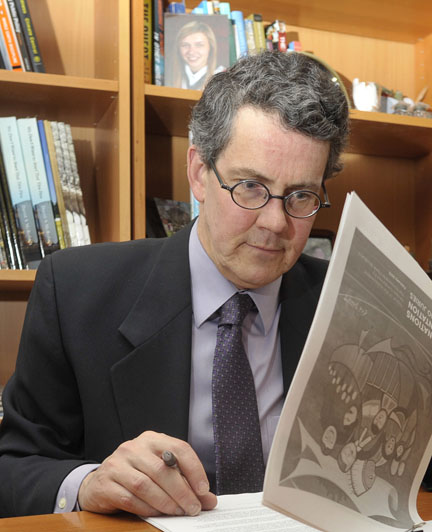When it comes to addressing aboriginal justice issues, yesterday’s federal budget largely upholds the status quo, leaving some lawyers with mixed feelings.

While the renewal of funding for aboriginal justice programs is positive, lawyers say they see neglected issues, little in the way of a long-term commitment, and no ambitious plan to tackle the concerns of aboriginal communities.
The 2013 budget plans to spend “$71 million over two years for supplementary policing services, the aboriginal justice strategy, and the family violence prevention program.”
It appears like a hefty sum, but the breakdown of the allocation simply shows a reinstitution of funds from previous years, according to David McRobert, a member of the Ontario Bar Association’s aboriginal law section executive.
The aboriginal justice strategy, a program designed to help aboriginal communities assume greater responsibility for administering justice in their communities, is receiving $11 million in 2013-14. This is consistent with the government’s funding for the program since 2000, which ranged from $9 million to $10 million.
“The recent Iacobucci report for the Ministry of Attorney General on flaws in the jury system with respect to aboriginal participation and the fact the aboriginal peoples are vastly overrepresented in our male and female prisons . . . show that native communities need much more control over their justice systems to prevent some terrible ongoing injustices,” says McRobert.
“This money is necessary and a positive development but it is a drop in the bucket.”
Although the budget suggests the strategy is being renewed for two years, Jonathan Rudin, project director at Aboriginal Legal Services of Toronto, says a government memo he received Friday indicates the renewal is only for one year.
“We are happy that the AJS is has been renewed at the same level but if it’s only been renewed for one year, that’s certainly problematic for us in terms of planning and being a able to deliver services,” says Rudin, adding that several programs have been funded by the strategy for many years. “We don’t know from year to year whether we’re going to be around.”
The family violence prevention program, which funds shelter and violence prevention services on reserves, received $11.9 million last year. It’s receiving the exact same amount this year.
But the problem McRobert sees with the budget is also about what’s not in it. “The budget makes no mention of numerous calls for a public inquiry into the high number of missing and murdered indigenous women,” he says.
This year’s budget also allots $33 million over two years to policing support programs in First Nations and Inuit communities. In 2011, the budget provided $30 million over two years to the same program. An additional $3 million over two years is proposed to assign 10 more officers within First Nations police services who will focus on contraband tobacco.
This is good considering the seriousness of the tobacco smuggling problem, says McRobert, but “it seems questionable that 10 new officers will do much.
“Even so, the focus of the Justice department and the Finance department is on justice spending and not on prevention. Smuggling is attractive because other economic opportunities on certain reserves are not available.”

 While the renewal of funding for aboriginal justice programs is positive, lawyers say they see neglected issues, little in the way of a long-term commitment, and no ambitious plan to tackle the concerns of aboriginal communities.
While the renewal of funding for aboriginal justice programs is positive, lawyers say they see neglected issues, little in the way of a long-term commitment, and no ambitious plan to tackle the concerns of aboriginal communities.